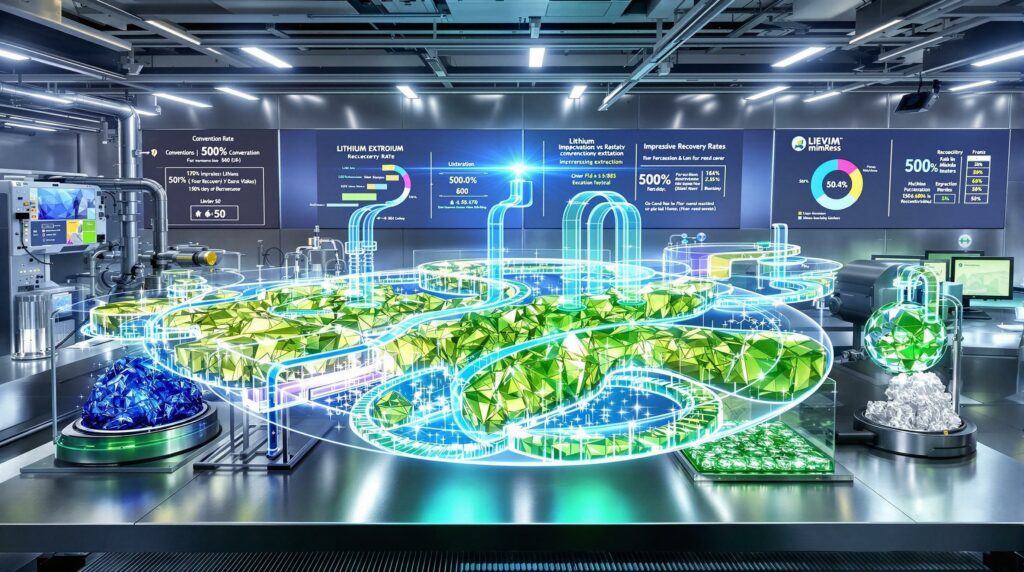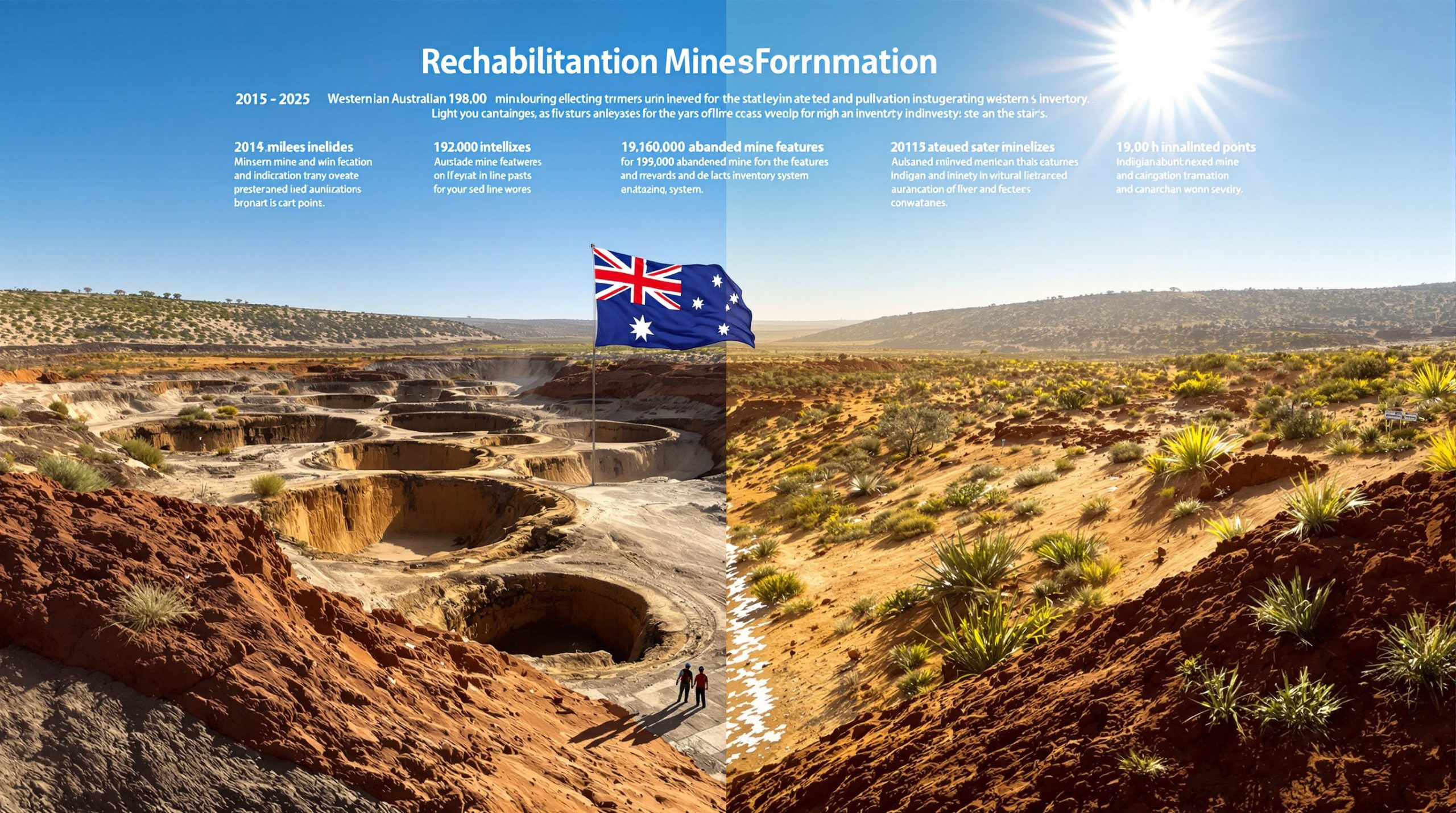LieNA Lithium Processing Technology: A Breakthrough in Mineral Recovery
The lithium processing landscape is undergoing a significant transformation with innovative technologies emerging to meet growing global demand. Among these innovations, the LieNA technology stands out as a potential game-changer in how the industry extracts and processes lithium from spodumene concentrates. Through a strategic partnership between Livium and Mineral Resources (MinRes), this proprietary technology is moving closer to commercial reality.
Understanding LieNA's Innovative Approach to Lithium Extraction
LieNA technology represents a significant advancement in lithium processing methods, specifically engineered to extract lithium from spodumene concentrates more efficiently than conventional techniques. What makes this technology particularly valuable is its ability to process lower-grade materials that traditional methods would typically discard as waste, potentially transforming previously uneconomical resources into viable assets.
The technology employs a specialized chemical approach that enhances lithium recovery from spodumene. While detailed technical specifications remain proprietary, pilot testing has demonstrated promising results that suggest potential improvements in recovery rates compared to traditional processing methods. By potentially reducing chemical consumption while maximizing lithium yield, LieNA addresses both economic and environmental concerns in lithium production.
The Livium-MinRes Partnership Structure
The joint venture between Livium and Mineral Resources established in August 2025 creates a balanced 50:50 ownership structure focused on commercializing the LieNA technology. This formal partnership follows the successful completion of Stage 1A activities under their previous joint development agreement, which included operating a pilot plant and conducting engineering studies for a demonstration facility.
"We are incredibly pleased to formalise our joint venture position with MinRes following successful completion of targets we set together two years ago," noted Simon Linge, CEO and Managing Director of Livium. The intellectual property for LieNA, previously wholly owned by Livium, now resides within the joint venture, with both parties enjoying equal governance rights.
The financial framework for this partnership follows a strategic investment approach. MinRes had the option to convert its previous funding into equity, with the original convertible note valued at A$4.5 million. In a demonstration of mutual confidence in the venture's financial stability, both parties agreed to waive the remaining drawdown of A$281,000 (approximately $183,141), as the venture currently maintains sufficient operational funds.
Commercial Value Proposition of LieNA Technology
In the rapidly expanding lithium market, technologies that can efficiently process a wider range of feedstock materials hold significant commercial value. LieNA directly addresses key challenges in lithium processing by potentially offering cost advantages and improved recovery rates compared to conventional methods.
What makes LieNA particularly valuable is its potential to extract lithium from materials that might otherwise be considered waste. This capability could provide mining operations with a competitive edge in resource utilization, effectively increasing the overall value extracted from existing spodumene deposits without proportionally expanding mining operations.
The technology could deliver substantial economic benefits through improved lithium recovery rates, potentially lowering production costs while expanding viable resource bases. For companies operating in increasingly competitive lithium markets, technologies that improve yield and reduce waste represent critical competitive advantages, especially with ongoing Australia lithium innovations driving industry transformation.
Strategic Commercialization Roadmap
The joint venture has developed a sophisticated approach to commercialization centered on technology licensing rather than direct production. Their revenue model targets an 8% gross product royalty rate from third-party licensees, creating a potentially significant revenue stream without requiring capital-intensive investments in production facilities.
This licensing approach could substantially expand the technology's market reach by generating fees on all processed tonnage at mines implementing LieNA. The model allows the joint venture to scale rapidly across multiple operations while mining companies benefit from improved recovery rates without developing proprietary technology internally.
The commercialization roadmap begins with licensing the technology to a semi-commercial facility, which MinRes may independently fund and operate. This initial deployment aims to demonstrate the technology's effectiveness at producing lithium salt at commercial scale, with MinRes receiving a discounted royalty rate as an early adopter. This phased approach provides operational validation before broader market deployment, potentially de-risking the technology for future licensees.
Navigating Market Challenges and Alternative Pathways
Despite the technology's promise, the joint venture faces pragmatic challenges related to market timing. The partners have acknowledged that "current market conditions do not favour the economic construction and funding of the LieNA demonstration plant," demonstrating a realistic assessment of current lithium market dynamics.
In response to these challenges, the partners have extended development deadlines to allow for market reassessment and exploration of alternative commercialization strategies. This pragmatic approach reflects the cyclical nature of lithium markets and demonstrates strategic flexibility.
The joint venture is evaluating multiple potential paths forward, including alternative partnerships and monetization strategies. This adaptable approach allows technology development to continue despite challenging market conditions, potentially positioning LieNA for rapid deployment when market dynamics improve, similar to how the Thacker Pass lithium project has navigated regulatory and market hurdles.
Evolution of the Livium-MinRes Collaboration
The formation of the joint venture represents the culmination of a structured development process that began approximately two years earlier. The successful completion of Stage 1A activities provided the technical validation necessary to formalize the partnership, demonstrating both companies' commitment to advancing the technology.
"Early in our engagement, we identified MinRes' deep operational expertise and strategic vision as key attributes to assist in the commercialisation of LieNA," explained Simon Linge, highlighting the complementary strengths each partner brings to the venture.
The partnership leverages technological expertise and innovation from Livium alongside operational knowledge and strategic vision from MinRes. This combination of capabilities creates a potentially powerful platform for advancing the technology from pilot testing to commercial implementation.
MinRes expressed confidence that "the technology has a role to play in the future of lithium processing," suggesting potential industry-wide impact if successfully deployed. This endorsement from an established mining company with significant operational experience lends credibility to LieNA's commercial prospects.
Future Market Potential and Growth Opportunities
As global demand for lithium continues to grow, driven by electric vehicle adoption and energy storage applications, technologies that improve resource efficiency hold significant potential. LieNA's ability to potentially process previously uneconomic materials could position it as a valuable solution in an increasingly resource-constrained industry.
If successfully commercialized, LieNA could contribute to more efficient resource utilization across the lithium sector, potentially influencing industry standards and practices. The technology's future growth opportunities may expand as lithium demand increases and the pressure to maximize resource utilization intensifies.
The technology's potential to increase effective lithium supply by improving recovery rates from existing operations could contribute to meeting growing global demand without requiring proportional expansion of mining operations. This efficiency gain could prove increasingly valuable as accessible lithium resources face development constraints, complementing direct lithium extraction methods being developed for brine resources.
Technical Differentiation and Environmental Considerations
LieNA represents an alternative approach to conventional lithium processing methods, with potential advantages in recovery rates and resource utilization. While specific technical details remain proprietary, the technology's development through pilot testing suggests meaningful differentiation from existing processes.
Modern lithium processing technologies face increasing scrutiny regarding their environmental impact and sustainability credentials. Technologies that improve resource utilization typically offer sustainability benefits through reduced waste generation and more efficient use of raw materials. This aspect could become increasingly important as environmental standards in mining continue to evolve.
The potential reduction in chemical consumption and waste generation could position LieNA favorably in jurisdictions with stringent environmental regulations. As the lithium industry faces growing pressure to improve its sustainability profile, processing technologies that maximize resource utilization while minimizing environmental impacts may gain competitive advantages, particularly as battery-grade lithium refinery capacity expands globally.
Expert Perspectives on LieNA's Development
The progression of LieNA from concept through pilot testing to joint venture formation indicates positive technical assessment by industry experts. The willingness of MinRes, an established mining company with significant operational experience, to formalize its partnership with Livium provides implicit industry validation of the technology's potential.
Industry perspectives on lithium processing innovation emphasize the need for technologies that can improve efficiency and reduce costs. The formation of the LieNA joint venture aligns with broader industry trends toward developing more efficient processing technologies to meet growing demand for battery materials.
The Livium-MinRes partnership represents a strategic alignment between technological innovation and operational expertise. This combination could potentially accelerate the technology's development and commercial implementation, providing a framework for bringing new processing methods to market, according to a recent joint venture announcement covered by industry publications.
Common Questions About LieNA Technology
What specific advantages does LieNA offer over conventional lithium processing methods?
LieNA technology potentially offers improved lithium recovery rates, particularly from materials that might be considered waste or uneconomical using traditional methods. This could result in more efficient resource utilization and potentially lower overall production costs for lithium compounds.
How soon could the technology be commercially deployed?
While the joint venture has extended development deadlines due to current market conditions, the technology has already progressed through pilot testing. Commercial deployment timeline will depend on market conditions, with initial implementation likely through a semi-commercial facility operated by MinRes.
What impact could LieNA have on global lithium supply?
If successfully commercialized, LieNA could potentially increase effective lithium supply by improving recovery rates from existing operations and enabling processing of previously uneconomical materials. This could contribute to meeting growing global demand for lithium without requiring proportional expansion of mining operations.
How does the licensing model benefit potential users of the technology?
The licensing model allows mining companies to implement advanced processing technology without developing it internally, potentially improving their operational efficiency and resource utilization. While licensees would pay royalties on production, the improved recovery rates could offset these costs through increased output and value creation.
What factors will determine LieNA's commercial success?
Key success factors include technical performance at commercial scale, lithium market conditions, comparative economics versus conventional processing methods, and the ability to demonstrate clear value to potential licensees. The technology's ability to deliver meaningful improvements in recovery rates and economics will be critical to widespread adoption.
Disclaimer: This article contains information about emerging technology and market developments. Statements regarding future performance, market potential, and economic impacts represent speculative assessments rather than guaranteed outcomes. Readers should conduct independent due diligence before making investment or business decisions based on these developments.
Additional Considerations for Technology Implementation
For mining operations considering advanced lithium processing technologies like LieNA, several implementation factors require careful evaluation. Process integration with existing operations, capital requirements, and training needs all influence the overall economic calculation when adopting new technologies.
The licensing model proposed for LieNA potentially reduces implementation barriers by limiting upfront capital requirements compared to developing proprietary technology. However, operational adjustments and potential retrofitting of existing facilities would still represent significant considerations for potential licensees.
As the joint venture progresses toward commercialization, providing comprehensive implementation support alongside the core technology could enhance market adoption. Technical expertise, integration guidance, and operational training would represent valuable components of a successful technology licensing program.
The Broader Impact of Processing Innovations in Lithium Markets
The development of LieNA technology occurs against a backdrop of rapid evolution in lithium markets. As battery manufacturers and electric vehicle producers secure long-term supply agreements, processing innovations that improve resource utilization could reshape competitive dynamics throughout the supply chain.
Technologies that maximize lithium recovery from existing operations address a critical constraint in meeting projected demand growth. By potentially expanding effective lithium supply without proportional expansion of mining operations, processing innovations like LieNA could help balance market dynamics as demand continues to grow, particularly in regions with established brine operations like those described in recent Argentina lithium brine insights.
The formation of the Livium and Mineral Resources joint venture for LieNA lithium processing technology represents a significant development in the ongoing evolution of lithium extraction and processing methods. As this technology progresses toward commercial implementation, its potential impacts on resource utilization, production economics, and supply availability will become increasingly important considerations for stakeholders throughout the lithium value chain.
Seeking to Identify Promising Lithium Investments?
Discovery Alert's proprietary Discovery IQ model delivers real-time notifications on significant ASX lithium discoveries, instantly transforming complex mineral data into actionable investment opportunities. Visit our discoveries page to understand how major mineral discoveries can generate substantial returns and begin your 30-day free trial today.




